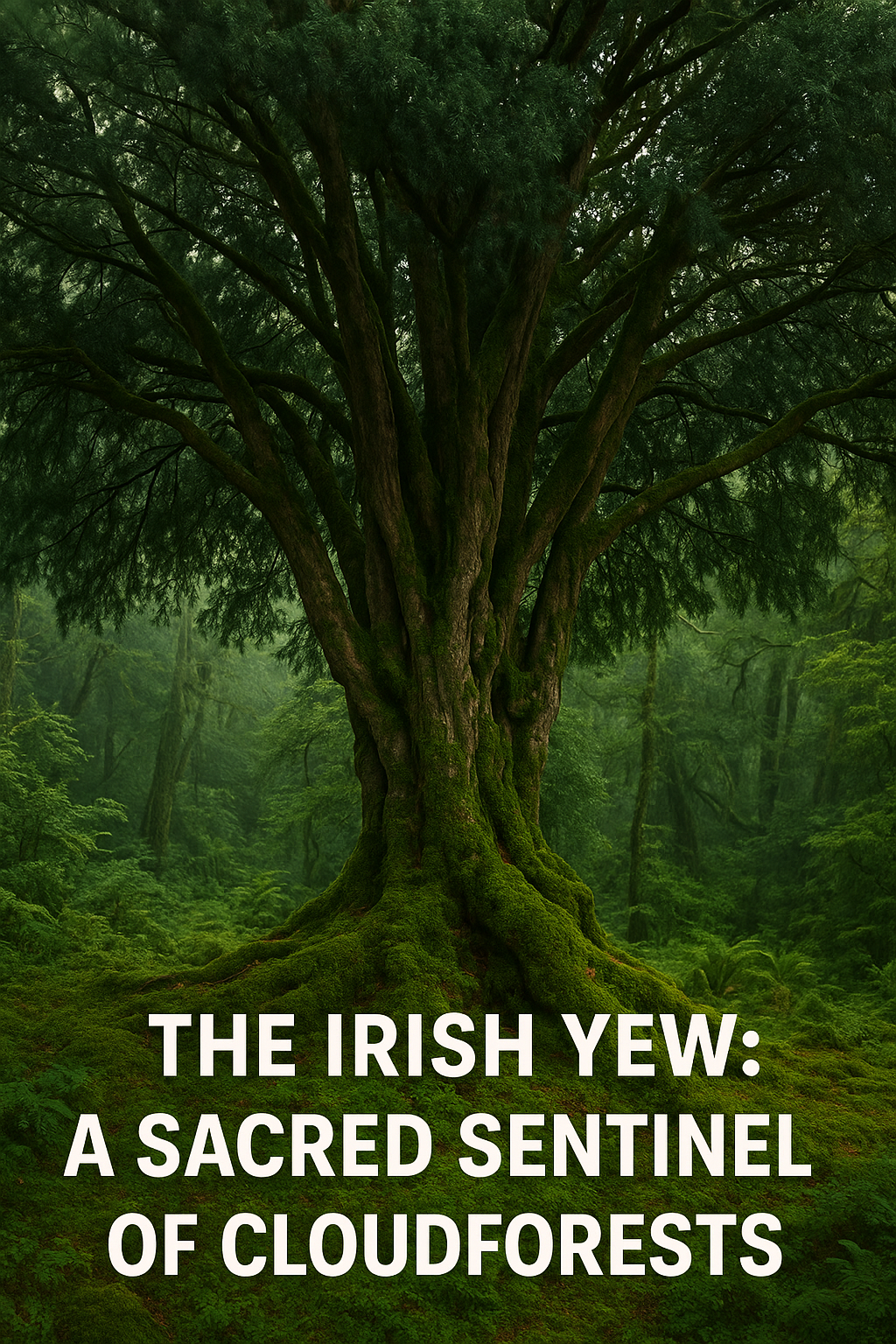The Irish Yew: A Sacred Sentinel of Cloudforests
When we speak about Ireland’s native forests, we often imagine towering oaks, whispering birches, or the moss-laden understory of ancient woodlands. But hidden among these giants is a tree far older, more mysterious, and deeply woven into our ecological and cultural story—the Irish yew (Taxus baccata).
At Cloudforests Ireland, where our mission centers on protecting biodiversity and accelerating reforestation, the yew holds a unique place. It is not just a tree; it’s a living relic of our ancient landscape and a keystone in restoring woodland resilience.
A Tree Older Than Ireland’s History Itself
The yew is one of Europe’s oldest native species, with some individual trees believed to be over 3,000 years old. In Irish mythology and medieval writing, the yew symbolizes:
Eternal life
Resilience
Mystery and protection
Its ability to regenerate from the inside—even when its trunk appears hollow or dead—makes it a botanical wonder. For Cloudforests’ rewilding vision, this longevity is a reminder that nature’s timelines stretch far beyond our own.
Why the Yew Matters to Ireland’s Cloudforest Ecosystems
While Ireland’s Atlantic cloudforests are more closely associated with oak and hazel, the yew plays a complementary ecological role:
1. A Sanctuary for Wildlife
Yews provide shelter for:
Songbirds nesting in dense evergreen canopies
Small mammals seeking refuge
Invertebrates feeding on decaying wood
In winter, when deciduous species stand bare, the yew’s evergreen foliage continues supporting life.
2. Soil Stability in Harsh Conditions
The yew thrives where other trees struggle—on cliffs, limestone outcrops, and thin, nutrient-poor soils. In cloudforest regions battered by wind and rain, yews help stabilize the landscape and support regeneration.
3. A Genetic Treasure
Ireland is home to the rare Florencecourt Irish yew, a unique fastigiate form found nowhere else in the wild. Protecting Irish genetic diversity is part of strengthening our future forests.
Celtic Mythology and Sacred Groves
In ancient Ireland, yews were commonly planted in:
Monastic sites
Ringforts
Old ceremonial grounds
They marked places of reflection, memory, and continuity. Some scholars believe early Irish monks saw the yew as a symbol of resurrection, resilience, and the endurance of nature—values that echo today in environmental movements like Cloudforests.
Even today, yews are guardians of many of Ireland’s oldest graveyards, silently reminding us of the unbroken thread between land, culture, and time.
The Toxic and the Life-Giving
Every part of the yew except its bright red aril (the fleshy “berry”) is highly toxic. Yet within this toxicity is a remarkable gift: taxol, a compound used in modern cancer treatments. It’s a powerful example of how biodiversity safeguards human health.
In Cloudforests Ireland's conservation philosophy, the yew demonstrates an essential truth: ecosystems aren’t just beautiful—they’re medicinal, protective, and irreplaceable.
Restoring Yew to Ireland’s Forest Future
Centuries of deforestation, grazing pressure, and land clearance have left yew populations fragmented. Cloudforests Ireland can play a vital role in restoring them by:
Including yew in regenerative planting schemes
Protecting ancient yews and their surrounding habitats
Promoting genetic diversity through propagation from Irish stock
Educating communities about species once central to Ireland’s wild identity
Yews are slow-growing, but forests are generational projects. What we plant today becomes someone else’s old-growth wonder.
A Call to Guardianship
The Irish yew is not just a survivor—it’s a storyteller. In its twisted branches and dark evergreen needles, it carries millennia of climate shifts, cultural rituals, and ecological wisdom.
By restoring cloudforests, we are giving the yew a chance not only to endure but to flourish again as a pillar of Ireland’s living landscape.
Plant a yew. Protect an ancient legacy. Grow the forests that will outlive us all.



